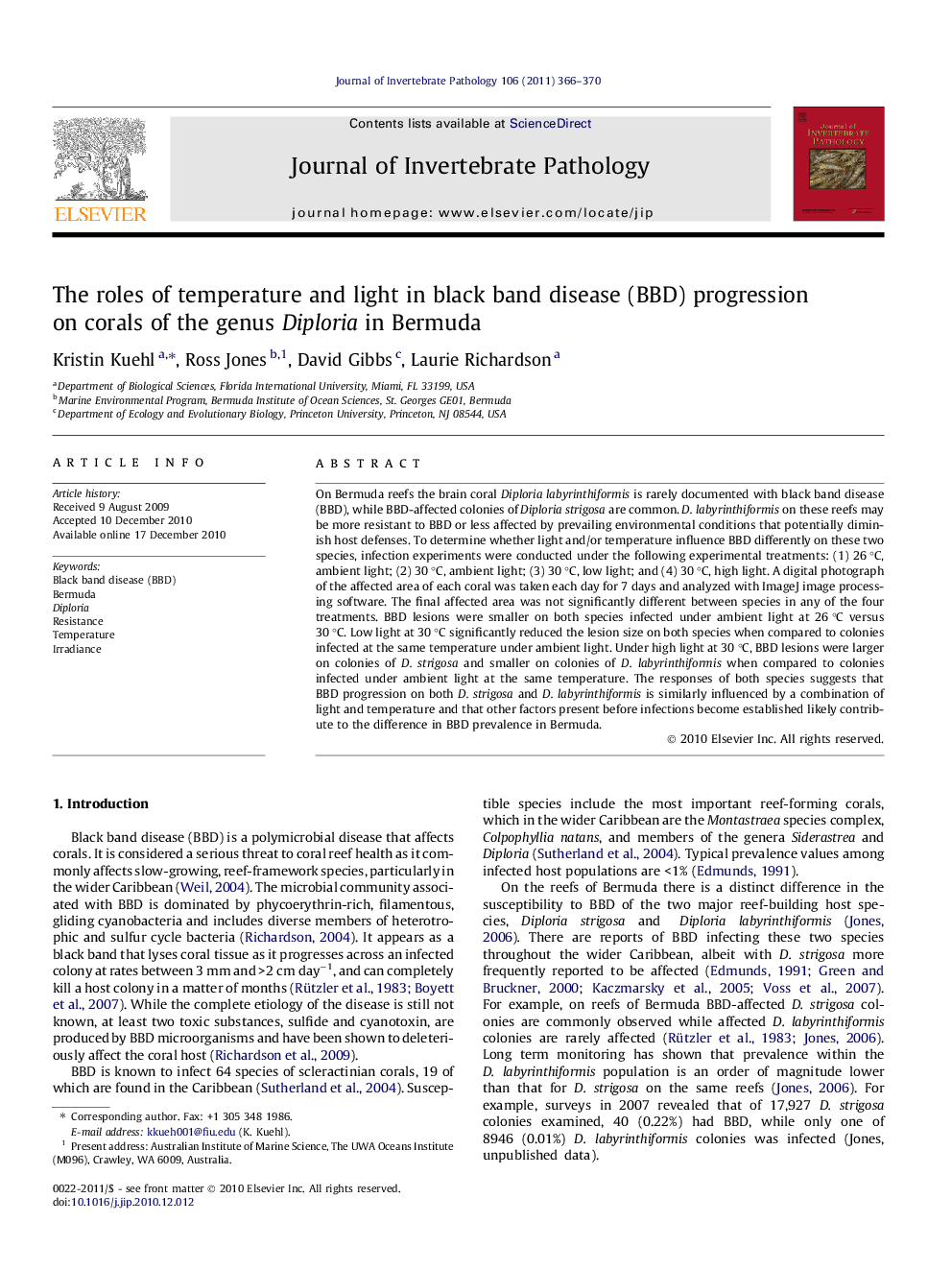| Article ID | Journal | Published Year | Pages | File Type |
|---|---|---|---|---|
| 6389866 | Journal of Invertebrate Pathology | 2011 | 5 Pages |
On Bermuda reefs the brain coral Diploria labyrinthiformis is rarely documented with black band disease (BBD), while BBD-affected colonies of Diploria strigosa are common. D. labyrinthiformis on these reefs may be more resistant to BBD or less affected by prevailing environmental conditions that potentially diminish host defenses. To determine whether light and/or temperature influence BBD differently on these two species, infection experiments were conducted under the following experimental treatments: (1) 26 °C, ambient light; (2) 30 °C, ambient light; (3) 30 °C, low light; and (4) 30 °C, high light. A digital photograph of the affected area of each coral was taken each day for 7 days and analyzed with ImageJ image processing software. The final affected area was not significantly different between species in any of the four treatments. BBD lesions were smaller on both species infected under ambient light at 26 °C versus 30 °C. Low light at 30 °C significantly reduced the lesion size on both species when compared to colonies infected at the same temperature under ambient light. Under high light at 30 °C, BBD lesions were larger on colonies of D. strigosa and smaller on colonies of D. labyrinthiformis when compared to colonies infected under ambient light at the same temperature. The responses of both species suggests that BBD progression on both D. strigosa and D. labyrinthiformis is similarly influenced by a combination of light and temperature and that other factors present before infections become established likely contribute to the difference in BBD prevalence in Bermuda.
Graphical abstractMean area of black band disease lisions (normalized by natural log transformation, +SD) on colonies of Diploria strigosa and Diploria labyrinthiformis, in each of the experimental treatments, 7 days post infection.Download full-size imageResearch highlights⺠Corals were infected with a disease under four light and temperature regimes. ⺠Disease progression was compared between coral species and treatments. ⺠No significant differences in progression between species for each treatment. ⺠Factors prior to infection likely contribute to differences in disease prevalence.
